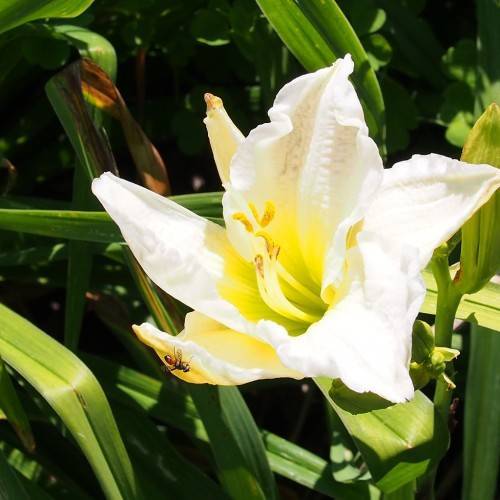
daylily
Hemerocallis 'Gentle Shepherd'
Cycle:
Herbaceous Perennial
Watering:
Average
Hardiness Zone:
3 - 9
Flowers:
Flowers
Sun:
Full sun,part shade
Leaf:
Yes
Growth Rate:
Low
Maintenance:
Low
Drought Tolerant:
Yes
Salt Tolerant:
Yes
watering
For Daylilies, it is important to water deeply once a week. During the hottest months, water at least twice a week. When giving your Daylilies a weekly drink, aim for a good soaking, where the soil has had a chance to absorb the water and the water penetrates the root zone. Water for about 20 minutes to allow for deep penetration. During very hot weather, try to water in the early morning or late evening, when temperatures are cooler and there is less risk of evaporation. In the winter, keep the soil just barely moist. Daylilies will benefit from a top dressing of compost in the spring.
sunlight
Daylilies require full or partial sunlight to thrive. At least 6 hours of sunlight per day is the minimum requirement for good health. For best results, try to provide 8-10 hours of sunlight per day. If your daylily is growing in a location with intense afternoon sun, it is recommended to provide some late morning/early afternoon shade, as too much direct sunlight can cause discoloration and burning of the plant's leaves.
pruning
Daylilies should be pruned during the late spring or early summer season. In order to keep your Daylily 'Gentle Shepherd' looking its best, it is important to prune back its old foliage and flower stems at least once per year. Cut away any old foliage to within a few inches of the base with sharp pruning shears or a knife. Additionally, any spent flowers should be trimmed off from the previous season’s growth to promote the growth of new flowers. After pruning is completed, you can add fresh mulch (such as compost or leaf litter) to the top of your garden bed to help retain moisture.
